Poland: A Sleeping Giant
A country that bridges East and West, old and new-while boasting a growing economy in Europe-is being looked to for its pool of talented industry resources
This sponsored supplement was produced by Focus Reports.
Project Director: Léa Boubon
Project Editor: Nicolas Carayon; James Waddell; Manuel Mendoza
For exclusive interviews and more info, please log onto http://Pharma.FocusReports.net or write to contact@focusreports.net
Stretching across the heart of continental Europe, Poland is a massive bridge that links east and west, old and new, and which epitomizes a changing continent. At one time an enigmatic behemoth cast behind an iron curtain, Poland's accession to the European Union in 2004 has injected its economy with new levels of competition and investment. A population of 38 million citizens, in turn, offers an enticing market for companies looking to expand east. The country's leaders proudly boast that Poland was the only EU economy to grow in 2009—the nadir of the financial crisis—and last year Poland surpassed the Netherlands as Europe's sixth-largest economy. Today the pharmaceutical industry looks to Poland for a skilled pool of human resources, an eastern platform for competitive manufacturing, and high-quality clinical trials. Yet there is still much work ahead, and in order to fully embrace the future the industry must overcome certain communication barriers stemming from the country's long, closed-market past. Greater room for innovation and increased dialogue between business and government are necessary steps to truly awake Europe's sleeping giant.

Niebianska Parmiec (Celesitial Memory) by Elzbieta Murawska
ECONOMIC REVOLUTION ...
The past two decades have brought about sweeping changes and lasting benefits for Poland through its transition to a market-based economy and, more recently, incorporation into the European Union. The Balcerowicz Plan of "shock therapy" undertaken in the early 1990s liberalized trade and privatized former public assets, thereby increasing industrial competition and promoting foreign direct investment. Poland was widely lauded as a success story among transitional economies. Since 2004, EU membership has compounded the positive effect of capitalist reforms by granting the Polish economy access to structural funds. Today the country is the largest beneficiary of EU funds among the 27 member states, receiving approximately 20% of total EU financial support. While GDP per capita in Poland is still below the EU average, it is on par with that of its neighboring Baltic states. With 1.5% GDP growth in 2009, Poland was the best-performing European economy during the global financial crisis. Peter Koetsier, general manager of Bristol-Myers Squibb Poland beams that "the country has gone through a remarkable transition in the past twenty years, if you consider the huge steps forward in terms of infrastructure and the financial and legal systems. I look forward to continued progress in healthcare that will see the people of Poland reach health outcome levels more akin to other EU countries."
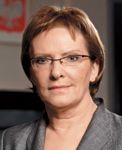
Ewa Kopacz, Minister of Health
... AND PHARMACEUTICAL EVOLUTION
Valued at slightly over €5 billion, Poland is the sixth-largest drug market in Europe, according to classifications by the European Pharmaceutical Market Research Association. The country's pharmaceutical industry is shaped by high generic penetration and government-dictated cost-containment which limits market access to innovation.
However, compared to similar-size markets such as Spain, Poland has an uncharacteristically high penetration of generics, which account for 85% of volume and 66% of value, according to PZPPF, the leading association for generics companies in Poland. As PZPPF president Cezary Slediewski explains, the dyamics behind high generic rates stem from "a patent system and data exclusivity which allowed Polish companies and importers to introduce generics earlier on in Poland than in Western European countries. There are some molecules in Poland that are already generics, whereas in Western Europe, generics for the very same molecule are not yet in the market."

Waldemar Pawlak, Minister of Economy
Additionally unique to Poland are minimal price spreads between generic and innovative drugs. Pawel Sztwiertnia, general director of INFARMA, the leading association for R&D companies in Poland, notes that "the average price of innovative originator products is one of the lowest in Europe. Subsequently, there are expensive generic products in Poland when compared to the average originator product prices in Europe. This is due to a market structure overpowered by generics. IMS Health data demonstrates that the average generic price is roughly 70% of that of an originator."
Per capita expenditure on healthcare and pharmaceuticals—less than $100—is one of the lowest in the OECD, three times less than Slovakia and the Czech Republic, and six times less than France and Germany.

POLAND - market value mln EURO, ex-manufacturer net prices
As Sztwiertnia explains, "The system in Poland reduces the already very limited window for innovative products. When a company manages to establish its product on the reimbursement list, it can then be prescribed by any doctor and be made available in every pharmacy. Thus, from the government's perspective, there is always the fear that reimbursement costs will skyrocket if a new product is added to the list. Reimbursement costs are very difficult to control; monitoring of prescriptions is practically nonexistent in Poland. There are no specialized categories of drugs that specialists could prescribe under certain conditions. For instance, because many patients need treatment for diabetes or cardiovascular diseases, the government is afraid that costs could grow out of control."
The federal government notes the necessary limitations on health expenditures in even the most developed countries. "The reasons for this are, among others, constantly growing health needs resulting from the aging of the population, quickly growing costs of medical technologies, and financial expectations of medical staff," cites Ewa Kopacz, Poland's minister of health.

POLAND - share of generic products
Despite the prevalence of generics, INFARMA assesses that market growth for innovative drugs is quite sustainable in Poland. Compound annual growth of 8.5% for innovative medicines from 2007 to 2010 exceeds EU-15 markets over the same period, a trend that reflects growth in value more so than volume.
WELCOME TO THE CLUB
Like many industries, the Polish pharmaceutical sector has capitalized on the country's inclusion into the EU, and key statistics are positive indicators of investor confidence in an open market. IMS estimates that more than 700 pharmaceutical companies presently operate in Poland, with increasing numbers every year. Similarly, the local market's 3.3% year-on-year revenue growth in 2010 is consistent with the average across all EU pharmaceutical markets over the same time.
Prior to EU accession, foreign innovative companies were deterred from entering the Polish market due to weak patent legislation. During the communist era local manufacturers were essentially the sole providers of pharmaceutical products. Closed Eastern European markets and prohibitively stringent EU standards turned industry inward favoring a lower cost culture of generics. Companies such as Teva and Sandoz established a strong presence. With today's open borders, product marketing is less of a threat and greater data protection is now implemented.
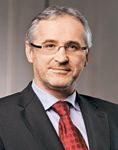
Jacek Glinka, President of the Management Board of Polpharma
Geography and a malleable East/West cultural cohesion is one driver behind an attractive pharmaceutical climate in Poland. "In Polish history, the country has always stood between two great powers: Germany and Russia," says Michael Pilkiewicz country manager of IMS Health Poland. Pilkiewicz assesses that in both market potential and value, Poland is recognized as a big Western European Union country that shares many similarities with other European markets. "At the same time," he adds, "Poland knows the culture of Eastern countries. Poland can easily talk to its partners in Russia, Slovakia, Hungary and the rest of the East. The East of Europe has a completely different culture to that of the West. Polish exporters therefore have a very good starting point in terms of knowing how to operate in these markets."
A recently liberalized market with a relatively low-cost base in the geographic heart of the continent also makes good economic sense for manufacturing. Innovative companies have invested hundreds of millions of dollars in Poland through the privatization process of state owned companies. GlaxoSmithKline, Sanofi-Aventis, and Novartis operate factories in Poland employing thousands of people and provide a positive stimulus for the local economy.
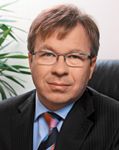
Maciej Adamkiewicz, CEO of Adamed
Recognizing operational benefits, perennial top-five pharma giant GSK has invested $417 million in modernizations for its manufacturing warehouse in Poznan, 175 miles west of Warsaw, which it deems one of its most strategic plants in Europe. As Big Pharma companies increasingly review global manufacturing sites for cost-saving synergies, "Poznan is definitely one of the key sites in the region where GSK continues to invest," according to Jerzy Toczyski, president of the board and general manager of GSK Pharmaceuticals in Poland. Capitalizing off of Poland's central location, production of one of GSK's R&D-based products is currently being shifted to Poznan. "Poznan is one of the four European multimarket warehouses where we keep the stocks of our products to be distributed to the regional markets," says Toczyski. "Additionally, since we have such good access to qualified personnel, one of GSK's global information technology (IT) hubs is located in Poznan. Indeed, more than 200 highly qualified IT experts work there to support GSK's global network. Apart from regular business operations such as marketing and sales activities, there are three other major areas of investment for the company: production, logistics, and IT."
The closed market under communist times made it difficult for even generics players to enter Poland, notwithstanding the presence of Teva and Sandoz. Poland is therefore a relatively new market for multinational generics companies such as Canada's Apotex. Having registered several products such as Ranitidine or Verapamil in the early 1990s, it took Apotex nearly seven years to make the full leap into Poland, ultimately launching a range of medicines and employing 20 sales representatives in 1998. Today, managing director Michal Pietraszek says that "Poland is considered by the head office in Canada a very good market for the long run." Primed to take on the competition in a crowded generics market, Apotex is closely tracking patent expirations across Europe to seize potential new market share. "The company's best generic products have been chosen for registration in Poland, and the affiliate will now be focusing on new products," he says. "The group is looking at the patent situation in every European country. In Poland, if a patent expires today, Apotex is ready to enter the market tomorrow."

Pawel Sztwiertnia, President of INFARMA
The rising tide of EU accession certainly benefitted Popharma, the No. 1 generics company in Poland. With drastic, industry-wide changes occuring in Poland following EU membership companies were requested to upgrade their documentation for existing products to conform to European standards, which, as Jacek Glinka, president of the Polpharma's management board tells, "practically meant for most of them that 100% of the product portfolio had to be invested in or redeveloped." While EU requirements were originally only on the development side, uniform standards also triggered major investments in manufacturing facilities. "Everything had to be upgraded to some extent," Glinka adds. "The result is that Polpharma has today one of the most modern facilities in Europe, completed over five to 10 years ago and based on state-of-the-art technologies. In a way, the company has been forced to build a more competitive platform to grow its generics business in Poland." Enhanced manufacturing facilities add to Polpharma's dominant market presence. With 13% of the market and 18% in value, Polpharma is both a mature and constantly growing company in Polish generics.
FROM NEXT TO NOW
As a signal of the market's bursting potential in the eyes of many multinational affiliates, Poland is often included in the discussion as the "next" or "sixth" country for multinational affiliates invested in Europe after the big five of England, France, Germany, Spain, and the United Kingdom. "The country can be considered as a 'sleeping giant,' when looking at the overall population, the economic growth, and the fact that it is now an EU member," asserts Bednarz Bartosz, general manager of AstraZeneca Poland, one of the fastest-growing pharma companies in Poland in 2010. "Given its size and population, one could expect that Poland should somehow get closer to Spain in terms of the size of the pharmaceutical market," he adds.

Cezary Slediewski, President of PZPPF
However, the juxtaposition between a geographically massive, well-populated, and economically liberalizing market that is cautious about creating the financial access for innovation has convinced many industry executives that pharmaceutical industry development is still very much an ongoing process. "Naturally, the primary objective of the pharma industry is to continue its mission to improve health standards and sustain profitability, whereas the primary objective of the national healthcare system is to introduce more and more control over its spending, especially in the area of reimbursement," opines Anna Gajec, general manager of French consulting house Cegedim's Polish business. Peter Koetsier, general manager of Bristol-Myers Squibb Poland concurs, stating that "the transition to a free open market and a world of innovation will continue to be an evolution." Drawing a more figurative analogy, Koetsier likens the healthcare system in Poland to an adolescent. "It has its adult moments mixed with moments of being quite underdeveloped, and sometime a constant movement between the two."
Within this context, a better dialogue is called for between various stakeholders of the healthcare sector, including local authorities and the pharmaceutical industry in order to reach a common goal—better health outcomes for Polish patients—and to move Poland from "next" to "now."

Peter Koetsier, General Manager of BMS
DEMANDING A FASTER PACE OF CHANGE
Poland's accession to the EU has, of course, stimulated the competitive landscape and pushed local industry to align with European standards and regulations. Consequently, the benefits that have come with joining Europe's exclusive club have also fueled an appetite for further reforms and at a faster pace. Commenting on this two-fold effect, Michal Bichta, managing director of Germany's Merck Group, which is present in Poland through both pharmaceuticals and chemicals, notes that "the socio-economic situation has dramatically changed in Poland in the last 10 years, partly due to the fact that Poland became a member of the European Union (EU), but also due to the evolution of the national economic situation. Poland is gradually applying more and more European directives, yet at the same time, some existing regulations from the communist period still remain. Since Poland is part of the EU, Polish people have started to look around and compare what is available in neighboring countries. This awareness creates more pressure on healthcare services in Poland, as the population expects the country to be catching up much faster than the current pace."
The rapid pace of reforms, however, is countered by a government that is keen to control spending. The result has been what Cegedim's Anna Gajec describes as idiosyncrasies in the Polish regulatory and reimbursement systems. She notes, for example, that Poland negotiated a 15-year transition period before implementing the EU's harmonized 8+2+1 data-exclusivity standard. The regulatory environment is therefore typically characterized by long delays for reimbursement approval.
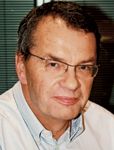
Jacek Barlinski, General Manager of Nycomed
However, as Health Minister Ewa Kopacz posits, due to limited funds at the National Health Fund's disposal, "The existence of waiting lists cannot be avoided. It is important to provide equal access to services, taking into account, among others, health status and acceptable waiting time for a given patient to receive service. In Poland, depending on health status, a patient is granted urgent or stable status, which means that the order of patients is not only established on the basis of the date of reporting to a doctor, but also on the basis of medical indications."
Strong economic conditions of the Polish healthcare sector will indirectly influence the security of funds for reimbursement in a positive way. Numerous discussions within government circles are taking place regarding potential changes to the healthcare system and medicinal reimbursement. Minister Kopacz says that "the draft legislation on the reimbursement of medicines, food for particular nutritional uses, and medical devices has provided for the total reimbursement budget indicator at the level no higher than 17% of expenditures on total healthcare, which guarantees that access to reimbursed products will be gradually wider, along with increased the budget for total healthcare."
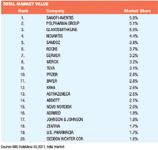
Total Market Value
But according to Gajec, draft legislation is not so clear-cut. With complexities in proposed scenarios varying significantly from one to the other, building up long-term strategies in a capricious and ambiguous environment can be real challenge. "As a consequence of these characteristics I would say that Poland is highly different to some others markets in the region and that every single general manager in Poland must find a good, sometimes very specific, operational way to conduct business," she adds.
Fully concurrent, Merck's Bichta notes that in Poland, "business is driven by change; planning years in advance seems almost impossible in our country." However, adaption to local market specificities and the adoption of different cultures—in this case, the demand for reform and the need for patient planning—is of second nature to Merck Serono. Having assisted in the corporate integration of Merck and Serono in 2007, Bichta attests to the experience as an "alignment of mindsets and culture." He recalls that "whereas the Serono legacy was customer-oriented, highly specialized, and focused on short-term results, Merck's legacy was more focused on the general practitioners market and with emphasis on long-term growth and lifecycle management." Very applicable to the disparities in the Polish market, "Merck Serono is today benefiting from both mindsets and cultures, which have a very positive impact on the performance on both sites—pharmaceuticals and chemicals—in real terms." Merck in Poland is a market leader in treatments for highly prevalent social diseases such as oncology, cardiovascular, and neurodegenerative disorders and, according to IMS data, was the fastest-growing top-40 pharma company through the first three quarters of 2010. Underscoring flexibility and diversity as a key to success in Poland, Bichta states, "It is important to be close to people who understand the market from different angles, who show their expertise in certain areas. General knowledge is definitely not enough; companies should be specialized."

Michal Pietraszek, General Manager of Apotex Poland
FLEXIBILITY IS A VIRTUE
The ambiguity that exists in the Polish market, which Cegedim's general manager Anna Gajec previously referenced, stems from a lack of communication between industry and government concerning national healthcare planning and reimbursement initiatives. With a new reimbursement act slotted for January 11, 2012, many mixed signals are being sent in the interim for industry to interpret and strategize against. Naturally, this can stymie forward-planning for pharmaceutical companies. "There is today in Poland a serious problem of lack of dialogue with the government authorities," opines Don Bellamy, country president of Swiss pharmaceutical giant Novartis. "There is heritage of mistrust between the two sides: The government believes that it should take decisions on the future of healthcare by itself, behind closed doors, and the industry sees only things that are released, which are in my opinion not very well thought out, not very strategic, nor constructive either for the patient or the industry."
Consequently, turbidity and ambiguity have engendered an enhanced flexibility for Polish pharmaceutical affiliates in order to appropriately respond to whatever reimbursement policy unfolds. "As the environment is evolving so quickly in Poland, the ability to remain flexible is probably a leader's greatest skill," according to BMS Poland's general manager Peter Koetsier. Conscious that rigidity often brings disappointment, Koetsier advocates the importance of companies to take advantage of the changes. "As having complete, timely, and accurate data can be challenging in Poland, you have to be good at taking decisions and calculate the risk, sometimes with little information. If a pharmaceutical company wants to be successful in Poland, it needs to be strategic and execute its plans well, and to do all this without the full set of decisions tools available in other places." Indeed BMS sees the unpredictability in the market as more of an opportunity than a threat. "It forces us to focus on customers, to get out of our offices and meet people; to get an understanding of how the market is moving on a daily basis." This extroverted mindset is especially applicable to BMS's patient-centric business model in Poland. BMS works closely with hospitals in specialized therapeutic areas such as diabetes, HIV, immunology, and hepatitis. "Even though there is recognition for the need of these products," notes Koetsier, "the processes are sometimes slow and unpredictable," thereby requiring a streamlined and extroverted workforce to truly understand movements in the markets.

Michal Bichta, General Manager of Merck Poland
"The industry often has to operate blindly," says Tapani Sura, general manager of Astellas Poland. "More transparency is needed in the administration system, regulation, drug approvals, and market authorizations for reimbursed products." The need for quick, flexible responses to a potentially changing reimbursement market hits close to home for Astellas, No. 25 in sales in Poland last year according to IMS. Sura took over as general manager of Astellas Poland in 2006, one year after the merger of Yamanouchi and Fujisawa, which formed the company as it stands today. Astellas Poland was hit particularly hard in 2006 due to reimbursement delays and a 13% government-mandated reduction of prices on foreign drugs. But driven by a strong pipeline of therapies for urology, transplantation, dermatology, anti-infective, and pain management, Astellas has been one of the fastest-growing pharmaceutical companies in Poland since 2006. Today, Poland ranks as the sixth-most-important market for the group's European operations, with revenues in Poland growing on par with top-five megamarket Italy. Sura projects that within two years the Polish affiliate can even catch up to Italy. Relating past performance to current market signals, Sura stresses that "Astellas strives to be fast and, more importantly, flexible in all its operations.
"The quick ones can be better than the bigger ones," says Pawel Ciapala, managing director of Ipsen Poland. Although Ciapala notes that quick decision-making is characteristic of Ipsen due to a lean and effective structure—an advantage over larger competitors—in Poland "Ipsen has understood the importance of flexibility, which it has strongly developed as one of its main assets." The idiosyncrasies of the Polish market have led Ipsen to, as Ciapala describes, increasingly work on key account management projects, strive to better understand the market, think ahead, and find out what is the best business model to be applied for its specialty products in oncology, endocrinology, neurology, and hemophilia. Having grown by double digits in 2010, Ipsen is indeed proving that quick and flexible is indeed better.
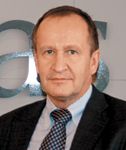
Tapani Sura, General Manager of Astellas
But even the biggest of Big Pharma shifted resources and optimized results. "I am relatively optimistic for the future of Pfizer in Poland," says country manager Patrick van Ginneken. "The reform will indeed bring a serious calibration, but the company already experienced it to a great extent in 2010. At Pfizer Poland, we have already shifted gears from a unique research and development perspective to a combined focus on R&D and medicines that are already off-patent. We are starting to see the positive effects of this strategy."
THE SOCIAL NETWORK
Italian family-owned company and COPD specialist Chiesi is another company that has seen recent success in Poland's complex market. Having first forayed into Poland in 2001, it took roughly eight years for Chiesi to reach critical mass when its blockbuster respiratory product, Fostex, was granted reimbursement. "Before 2009 the operation in Poland was just a small affiliate, with a hospital portfolio focused on niche markets and sales in the range of €2 million to €3 million—low relative to the size of the market," recalls. Dr. Arvydas Norvaisas, general manager of Torrex Chiesi Poland. Fostex reimbursement immediately tripled sales, bringing in €10 million in sales in 2010, 65% from Fostex alone.

Dr. Arvydas Norvaisas, General Manager, Torrex Chiesi Polska
Sympathetic to the plight of innovation still seeking market access, Norvaisas sheds an interesting light on the reimbursement discussion. Referring to the cost-containment debate as a "schizophrenic state pervading Europe" he draws on a passage from the book "The Leader's Way," written by the Dalai Lama to best sum up his take on the state of the market: "While the amount of information is growing exponentially, people are becoming narrower in their worldview and are no longer able to understand how all these ideas for moving society interact. On the one side business moves in the direction of profits whilst society attempts to limit these profits." Moving beyond a monetary debate, Norvaisas urges government to recognize the social value behind pharmaceutical innovation. "I have a feeling, as the Dalai Lama said, that in this era of hypercommunication, hyperinformation, and informational noise, people and governments are losing capability to see and understand the essence of the matter," he asserts. "We should not talk about budgets. We should all together talk about long-term health needs of the population and the ways to satisfy those needs. At this level, all stakeholders should have common understanding and strategy. It is a pity that still a lot of mistrust, misinterpretation, and misunderstandings among governments and companies do not allow to bloom healthy process of communication between them. Solutions are there. It is just necessary to come to them from both sides.
THE CERTAINTY OF TRIALS
In contrast to the uncertainties and ambiguities of future reimbursement schemes, an element of the value chain that pharmaceutical companies can confidently rely on in Poland are clinical trials and a strong research culture. Novartis Poland's country president, Don Bellamy, sums it up best: "Poland has a heritage of clinical trials and of being a center of excellence in the development of science. From the days of Marie Curie, there has been a legacy of medical discovery in Poland, today demonstrated by a dynamic and active clinical research platform."
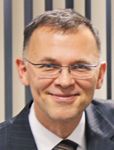
Wojciech Kuczynski, General Manager, Pierre-Fabre Medicament Polska
A November 2010 PricewaterhouseCoopers report on clinical trials identified Poland as the largest clinical trials market among Central and Eastern European countries and the Commonwealth of Independent States. High level of medical education, improved standards and processes, and increasing accessibility to diagnostics drive the importance of clinical trials in Poland for multinational pharma companies. Merck is benefitting from this situation as well as contributing to it," says Michal Bichta, the Polish affiliate's managing director. "Indeed, most of the leading clinical operations at Merck Serono also take place in Poland. Poland is a solid part of the group's corporate strategy for clinical trials."
Roberto Servi, managing director of Eli Lilly Poland, believes that a robust research culture and the strength of clinical trials in Poland will "increase the value of innovation in the country and the degree to which innovation and R&D are recognized in this country as an essential parameter for the patients and the community in general." Present in Poland for over 30 years, Lilly has done its part in innovating therapeutic treatments in Poland predominantly focusing on diabetes, neuroscience, critical care, and oncology. Its present strengths and a pillar of its business in Poland lie in human and analog insulin. "Since the beginning of our operations in Poland, the company has performed major breakthroughs in Type 1 and Type 2 diabetes," Servi notes. "The market for insulin represents today over 60% of Lilly's sales in Poland thanks to its major brands, which makes insulin the main driver of the affiliate's growth."

Pawel Miskiewicz, General Manager, Genzyme
Globally, Lilly has committed itself to organic growth and strategic alliances. Despite consolidation and acquisition trends among Big Pharma, Lilly sees itself as beyond the point in which it can substantially grow its innovation capacity through acquisition. This will therefore subsequently place a strong emphasis on homegrown innovation with Polish research and clinical trials playing a prominent role in the process. A company that breaks industry benchmarks in innovation—reinvesting approximately 20% of revenues in R&D—Lilly strives to further expand its current portfolio of therapeutic solutions in Poland by strengthening its focus on diabetes and neuroscience, as well as on areas such as cardiology and osteoporosis.
A 30-year presence in Poland for Lilly is perhaps only outmatched by more than 100 years of operations for Novartis. "Through its various original companies, Novartis and its predecessors have been in this country since the 19th century," explains Bellamy. Citing the relevance of Polish research to his company, Bellamy says, "Novartis is one of the many companies that invest in Poland for the sake of clinical trials. The company indeed conducts a whole variety of clinical trials that cover the wide range of the company's portfolio. Novartis Poland has 3,000 patients on 80 clinical trials at this moment in the country. The standards of clinical research that this country offers, at relatively low cost compared to Western Europe, are very attractive for a company such as Novartis."

CAGR% (2000-2010)
Clearly a dominant player in the market for clinical trials and innovative treatments, Novartis has also been steadily increasing its stake in the Polish generics market. Bellamy says, "Since the creation of Novartis in the early 1990s, there has been a rapid period of expansion for all our businesses, particularly with mergers and acquisitions for generics. Sandoz comes from a few acquisitions that took place in the last 10 years, the largest of them being the purchase of Lek Pharmaceuticals, a very large Eastern European generics manufacturer. This acquisition was the impulse that gave Sandoz the size it has today." With a critical mass behind its generics business, the combined Novartis-Sandoz entity makes it the No. 1 healthcare provider in Poland today and the market leader in 2010 sales according to IMS.
THE THREE BLOCKS
Despite Novartis's success, Bellamy admits that Poland is a very challenging market to thrive in because of the difficult institutional side of making a business. Adding to the complexities of the market are what he describes as three distinct blocks of competitors in Poland: innovators, generics, and well-established players with a very strong Polish heritage who "do a bit of both" and therefore make for tough competition in the market. With prices low, margins thin, and what he believes is an overall underinvestment in healthcare, Bellamy again references the common theme of ambiguity breeding uncertainty and requiring flexibility in order to gain a competitive advantage. "While there is no formula about succeeding in this market, you just have to try to understand how the whole machine works in Poland; even then, you cannot predict results. Although the whole environment is extremely challenging, the country is dynamic and changing. There is always this belief that tomorrow will be better than today."

Ipsen’s Warsaw, Poland, offices
Falling into the third group that does "a bit of both" is Nycomed. Growing at 3.3% in 2010, consistent with the wider pharma market, Nycomed is well diversified among innovative, generic, OTC, and food supplement products. However, with an appetite to grow its innovative portfolio in order to crack the top 15 of pharmaceutical companies in Poland, Nycomed has felt hindered by the government's conservative stance on reimbursing innovation. Certainly not reticent of government policy, country manager Jacek Barlinski asserts that "although the access to innovation is easier in some areas, generally speaking, the attitude of the Polish government is not in favor of innovative medicines. The pharma environment is going to change, as it is under constant re-evaluation—and there is no question whether the Polish pharmaceutical market requires improvement of regulation. There is also no doubt that the government has to be in a position where it must predict how much will be spent on reimbursement. Nevertheless, the new regulation that is under preparation is not written for such purpose. It is clearly written against the pharma industry and against the potential benefit of patients. The only purpose of this paper is to cut healthcare expenditures. Even though I agree that a new direction is needed, I am strongly against the way it is prepared, and how it is intended to be introduced without listening to what the industry or the patients have to say."
As innovation still fights its way through favorable legislation, Nycomed is reaping the benefits of manufacturing operations in Poland in Lyszkowice, in the country's south, approximately 16 miles northeast of Krakow. A relatively new facility, Barlinksi describes the factory as a center of excellence for Nycomed's global OTC manufacturing operations. The center also produces prescription drugs through contract manufacturing. Previously operating at 30% capacity in 2004, utilization today stands at over 70%, which is a testament to the robust growth of new production lines.

While Poland is perceived as a strong base for manufacturing, Barlinksi cogently advises industry and government to bear in mind the similar competitive advantages of other Eastern European neighbors. "If Poland is still today a low-cost country, Russia is even lower, and so too is Bulgaria." A highly skilled workforce, he believes, will naturally raise the cost structures of the country and over time erode the competitiveness of current low-cost manufacturing. Heeding a warning to sufficiently invest in the future, Barlinski concludes, "If such an unfriendly environment for the pharma industry is maintained, there will be consequences."
A PHARMERGING GIANT
Increasing competition for low-cost operations can be expected as Eastern European markets liberalize and industrial activities shift into the former Iron Curtain countries. Beyond manufacturing, Novartis's Bellamy alludes to a similar trend affecting clinical trials. "The standards of clinical research that this country offers, at relatively low cost compared to Western Europe, are very attractive for a company such as Novartis," he says. "However, that gap is getting a lot smaller, which is why there is a challenge for the clinical research based in Poland to reinvent itself and find the next differentiating factor."

Anna Gajec, General Manager of Cegedim Poland
One avenue for reinvention and new competitive advantages is in a burgeoning biotech field. Rare disease specialist and a newcomer to the Sanofi-Aventis family, Genzyme leads the way in Poland with three reimbursed products that drive country growth: Cerezyme for Gaucher disease; Aldurazyme for Mucopolisacharidosis I (MPS1); and Myozyme for Pompe disease. Moreover, the product Fabrazyme for Fabry disease is currently under discussion regarding its reimbursement situation. Pawel Miskiewicz, general manager of Genzyme North and Central Europe, also looks favorably on his company's room for growth in multiple sclerosis (MS) treatment. While MS "is a very serious disease that affects many patients in Poland," he notes, "only around 5% of patients are getting reimbursed treatment right now. This creates enormous opportunities for a company bringing therapeutic breakthroughs. I strongly believe that Alemtuzumab is just what MS patients need, and Genzyme is the company which can deliver this to them."
While rare diseases are a key part of Genzyme's growth strategy, the inherent risks that come with product development make it necessary for Genzyme to diversify across therapeutic lines and product areas. It has done this by developing its biosurgery franchise where it delivers hyaluronic acid injections (Synvisc classic, Synvisc One, Jonexa). Targeting the open market and fully paid for by patients in pharmacies for competitive prices, Miskiewicz notes that the strategy's high segment penetration attests to the value-for-money ratio of Genzyme's products. Other franchises that the company has built are in oncology, hematology, nephrology, and biosurgery. "These are very promising markets, with many unmet medical needs," says Miskiewicz. "The business paradigm fits well into Genzyme's idea of conducting commercial operations."
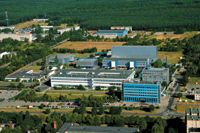
GlaxoSmithKline manufacturing plant in Poznan
Unsurprisingly, the growth of biotech in Poland is a function of market access determined by favorable reimbursement—an area in which Miskiewicz believes Poland significantly trails the rest of Western Europe. "In this part of the world reimbursement is the main challenge faced by companies involved in rare diseases. Therapies in these areas are extremely expensive; therefore existence of any sort of the reimbursement system is key." Although from a distance, procedures appear rudimentary, the decision-making process concerning reimbursement applications are discouragingly lengthy. While the understanding of issues exists, "it is just a lack of funding." Ultimately, however, Miskiewicz maintains a positive future outlook on biotech in Poland, underpinned by the structural endowments of the market. "I truly believe that Poland will be a very attractive market to work on. Once the country finally has a healthcare system set in order, then investments will come." The EU declared 2010 a Rare Disease Year whereby all member state governments participated in collective forums to present their national plans for approaching treatment in this arena. "If not for anything else," says Miskiewicz, "only by this obligation does Poland have to be open to innovative therapies."
The eastward expansion of the European Union could perhaps be the best stimulus for developing innovation in the Polish pharmaceutical industry. Industry leaders see the increasing number of former Soviet bloc countries opening their markets to innovation as a benchmark for Poland. Volker Zimmerman, managing director of UCB, holds firm on this view and, much like Genzyme's Miskiewicz, believes future opportunities trump past and present market access challenges. "Poland has a fantastic chance to be an innovative country, having joined the European Union in 2004," he asserts. "Thus, innovative drugs should also be available in Poland at a similar time as in other European countries, as is even the case for the Czech Republic or Hungary. Future-oriented countries like Poland should be encouraging the launch of innovative drugs on the national market." Globally, UCB's research-based pipeline, covering primarily biotech products, has a clear focus on unmet central nervous system and inflammation needs. However, due to market access restrictions, blockbuster products such as a Vimpat for epilepsy treatment, Cimzia for rheumatoid arthritis, and Neupro for Parkinson's disease have not been launched in Poland despite their placement in other European countries. As Zimmerman notes, "Sll have been submitted and successfully approved with the same studies and the same medical results in other countries where the products are already available for doctors and patients."

Don Bellamy, CPO head and country president of Novartis
Driven by innovative therapies, unmet medical needs, and sizeable populations, UCB is betting big on Poland's future. Zimmerman believes that "Poland can be one of the key countries within the UCB group in the medium term. To a certain extent, Poland is still a slightly unknown country, even underestimated, that could serve as a model for others when using the existing opportunities faster." As such, the company is taking proactive steps internally to streamline operation by renewing its workforce, promoting training, and enhancing various software systems. Outwardly, the focus is to become more attune to market needs. "The company is preparing itself for various scenarios that introduce greater market transparency as well as research potential partners. UCB Poland is fully engaged to accelerate the submission and approval process. Meanwhile, the company established the position of a market access manager and reorganized the medical department as well as the commercial department, with experts who are more familiar with the overall market conditions, whether it is in epilepsy or rheumatoid arthritis. UCB has also evaluated and updated medical and pharmacoeconomic data, so that the company can submit a competitive and more professional product package."
In a similar sentiment Martin Hanczaruk, general manager of Ferring, a local market leader in gastroenterology and in vitro fertilization products, agrees with the room for growth and underestmation of Poland. "Poland is definitely underestimated," he asserts. "Poland is for Ferring the second country in the region after Czech Republic. Now, when comparing both populations, it is easy to conclude on the growth opportunities for Ferring in Poland."
Unmet medical needs for diabetes marks a huge growth sector of the market for Novo Nordisk. Wojciech Kowalski, general manager of the group's Polish affiliate, explains that market growth for diabetes is higher than in other European countries, largely due to the fact that early detections systems have been weak over the past 10 years. He states: "Patients were put on quality treatments based on insulin injections relatively late. In fact, there were years when half of the diabetic population was not even diagnosed with this disease. Although there is still room for improvement, more and more patients with diabetes are detected and adequately treated. That has increased the size of the market for diabetes tremendously throughout the years." The Euro Consumer Diabetes Index, a publication provided by the Health Consumer Powerhouse, in 2008 rated Poland as the 25th country in Europe in terms of care of diabetics in 2008. "That was quite low and shows the need for improvement of the healthcare services for diabetics in Poland," says Kowalski.
Over the past 20 years Poland has been systematically breaking down walls for the betterment of its economy and society. The effect of November 9, 1989, in Berlin rippled east, bringing down communist barriers in Poland and opening up markets in former Soviet blocs. May 2004, brought down another barrier and incorporated Poland into a competitive, standardized European Union.
January 11, 2012, will be a major turning point, as that is the date the government will announce a new reimbursement policy for pharmaceuticals. The period leading up to January is therefore marked by another wall that government and industry must cooperatively surmount: a communication barrier between the two entities to cohesively determine the future of innovation in the country. To date, a government that is noble in its commitment to manage costs and safeguard a robust economy is countered by industrial innovators seeking greater access for life-altering medicines. Myriad signals about future legislation have produced ambiguity and uncertainty in the market. As one executive manager expresses, which is consistent with the collective voice of industry leaders, "I would be pleased if the relationship between the government and the pharmaceutical industry would continuously improve through a constructive partnership with the ministries of health, economy, education, and research. I am confident that this will happen." Poland's historic ability to break down walls and the prosperous future that a talented workforce and rich scientific culture offer leaves little room to doubt the full awakening of this Eastern European giant.
